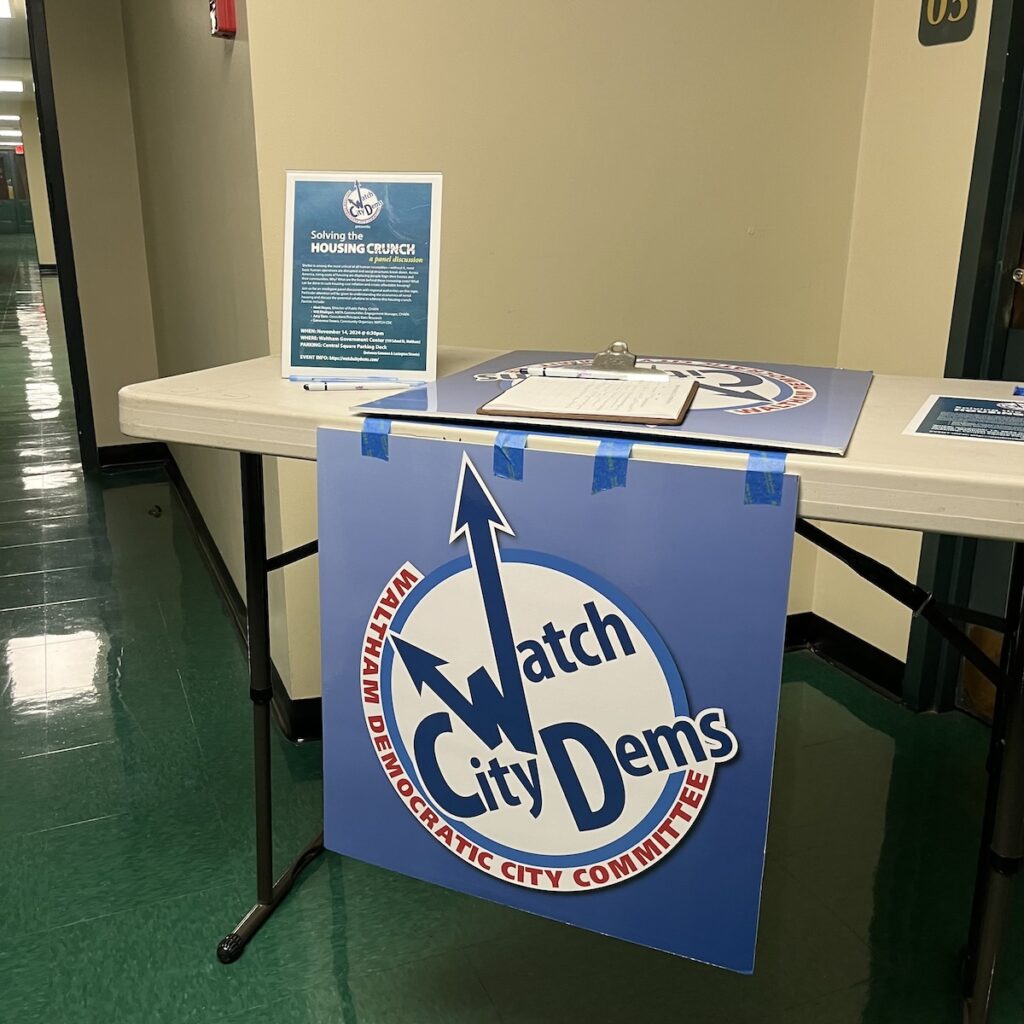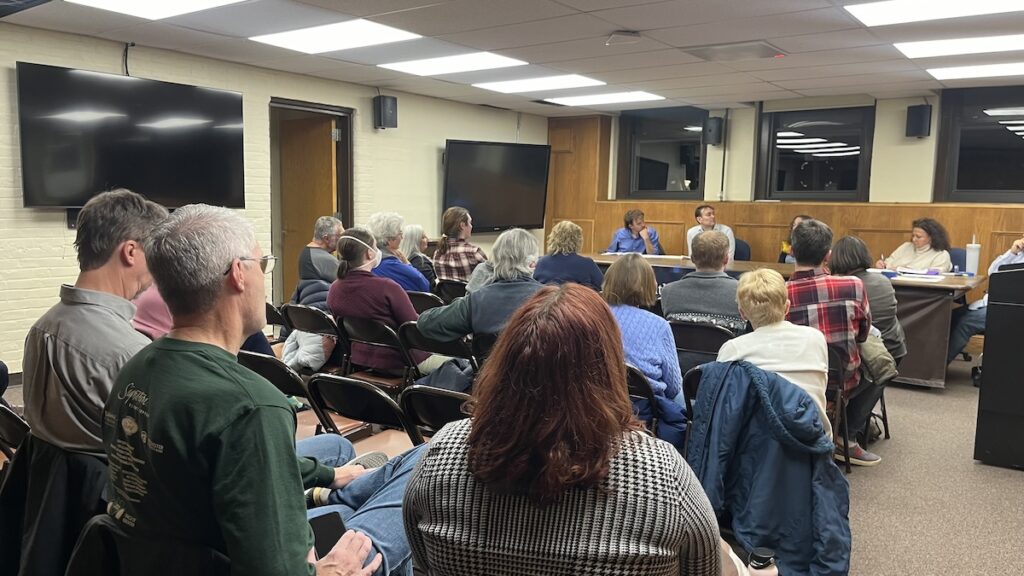By JOSEFINA CASPER
Waltham Times Contributing Writer

Housing experts and community voices took on the causes of Waltham’s tight housing market, highlighting the consequences of what it termed a “housing crunch” at a panel discussion last week.
They said significant rises in rents and a shortage of affordable units are forcing many out of the city and leaving some homeless.
It’s a scenario that’s playing out all over the area and the country, they added.
“You have so many communities around us facing the same problems,” said Andrew Fintzel, who as vice chair of the Waltham Democratic City Committee moderated the discussion. “It’s almost impossible to extricate one community out of the many.”
Fintzel’s comments and others’ observations came during the panel discussion “Solving the Housing Crunch,” held last Thursday, Nov. 14, at the Waltham Government Center. Presented by the Waltham Democratic City Committee, the event brought together several housing and community authorities to analyze and discuss the city’s escalating rent prices and explore potential solutions.
Waltham’s Housing Landscape

Panelist Genoveva Tavera, a community organizer with WATCH, a Waltham-based community development corporation (CDC) that promotes affordable housing, described the realities that Waltham residents face.
“It’s really bad,” she said, noting that rent increases have surged in recent months. Studio rents, for example, have risen from $1,700 in September to $2,500.
She said three-bedroom apartments currently cost between $3,500 and $4,000.
Such increases and prices are displacing tenants and leaving them distraught, said Tavera, who is also a volunteer with The Waltham Times.
“Last night someone called me crying, because his rent went [up] from $3,200. And he’s a single father. He cannot pay that rent,” she said.
She attributed much of the rent increases to the influx of students and professionals drawn to Waltham’s educational institutions and tech industries, an influx that creates more competition for housing.
Historical and legislative context
The panel delved into the historical roots of the state’s housing crunch.
Amy Dain, panelist and a consultant in public policy research, traced it back to what she called restrictive zoning laws enacted in the 1970s.
“Cities and towns were highly restrictive, particularly against multifamily housing,” Dain explained.
She also said those 1970s zoning law changes reversed 1950s-era policies and led to persistent housing shortages and rising prices, as well as altered migration patterns.
Matt Noyes, also a panelist and director of public policy at the Citizens’ Housing & Planning Association (CHAPA), described the scale of the problem, citing Massachusetts’ critical need for 200,000 new housing units over the next decade to stabilize the market. He further emphasized that 40,000 of those units must be affordable to households earning below 80% of the area median income.
While praising the $5.1 billion housing bond bill signed under the 2024 Affordable Homes Act as “historic,” Noyes also cautioned that it “won’t create a single home tomorrow” due to the lengthy processes involved in zoning, funding and construction.
Solutions: MBTA Communities Act and beyond
Panelist Will Rhatigan, MBTA communities engagement manager at CHAPA, called the MBTA Communities Act “the most significant effort to roll back exclusionary zoning in Massachusetts history.”
The act requires 177 transit-adjacent towns to allow multifamily housing by right, eliminating costly and time-consuming special permits. Over 80 towns have complied, two remain out of compliance, and about 100, including Waltham, face a year-end deadline to meet the requirements.
Panelists also discussed creative solutions such as the “Yes In God’s Backyard” (YIGBY) initiative and federal bill, which propose allowing multifamily housing by right on properties owned by religious institutions.
Dain highlighted Newton-based Lasell University’s creation of senior housing as an example of how institutional land can be used to address the housing shortage.
Tenant protections and immediate relief
Tavera said rent increases often create fear in tenants. She said tenants also often don’t know or understand their rights.
“Landlords compare rents and hike them by $600, $700, or $1,000. Tenants are scared and leave, not realizing they don’t have to,” she said.
Tavera and others praised rental assistance programs such as RAFT, which helps tenants cover up to $7,000 in back rent, but also criticized them for not addressing late fees. “Late fees, especially those at 10%, can accumulate to thousands of dollars, and they aren’t covered,” Tavera noted.
Noyes called for more assistance and immediate action.
“We need to invest in tenants’ rights so we can keep people in their homes. It’s much less expensive for the state to keep people in housing than to cover the costs of placing them in shelters,” he said.
What residents can do
Panelists urged Waltham residents to take an active role in addressing what it termed a crisis in housing. They encouraged residents to advocate for the city’s compliance with the MBTA Communities Act and to participate in public meetings to support zoning changes and tenant protections.
Tavera highlighted the importance of local engagement, saying, “We’re fighting to pass an ordinance to ensure families know where to turn in a crisis.”
She also urged residents to support organizations like WATCH, which provides tenant education and resources.
If you value stories like this, please support The Waltham Times through a tax-deductible gift.
